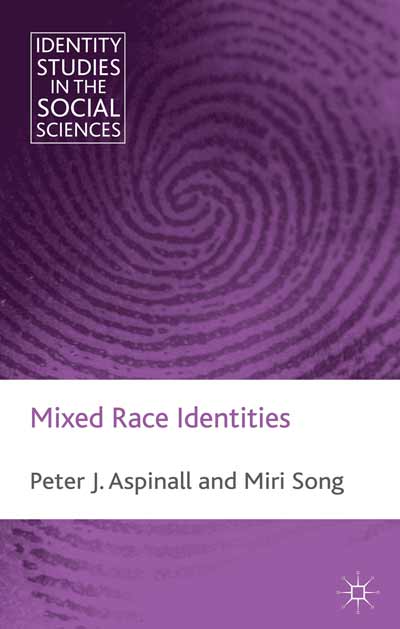Multiracial Identity: An International PerspectivePosted in Africa, Books, Identity Development/Psychology, Media Archive, Monographs, Social Science, South Africa, United Kingdom, United States on 2013-03-28 13:16Z by Steven |
Multiracial Identity: An International Perspective
Palgrave Macmillan
September 2000
186 pages
5 1/2 x 8 1/4 inches
ISBN: 978-0-312-23219-1
ISBN10: 0-312-23219-5
Mark Christian, Professor of African & African American Studies
Lehman College, City University of New York
Multiracial Identity provides an accessible account of the social construction of racialized groups. Using both primary (in-depth interviews) and secondary data, four nations are examined: the UK, US, South Africa, and Jamaica. The author discusses how little attention has been traditionally been given to theorizing multiracial identity in the context of white supremacist thought and practice.
Table of Contents
- Foreword–Diedre L. Badejo
- Part I: Theorizing Multiracial Identity
- Toward a Definition of Identity
- Multiracial Identity as a Term in the 1990s
- Historical Theories of ‘Mixed Race’ Persons
- Contemporary US Theories in Multiracial Identity
- Contemporary UK Theories in Multiracial Identity
- Part II: Speaking forThemselves (I)
- How the Liverpool, UK Respondents Define Themselves in a Racial Sense
- Parental Influence in the Construction of a Racialized Identity
- Part III: Speaking for Themselves (II) Shades of Blackness
- Is Wanting to Change One’s Physical Appearance an Issue?
- Part IV: South Africa and Jamaica: “Other” Multiracial Case Studies
- South Africa and the Social Construction of “Coloureds”
- Jamaica in Context
- Part V: Assessing Multiracial Identity White Supremacy and Multiracial Identity
- Social Status and Multiracial Identity
- Nomenclature Default and Multiracial Terminology


